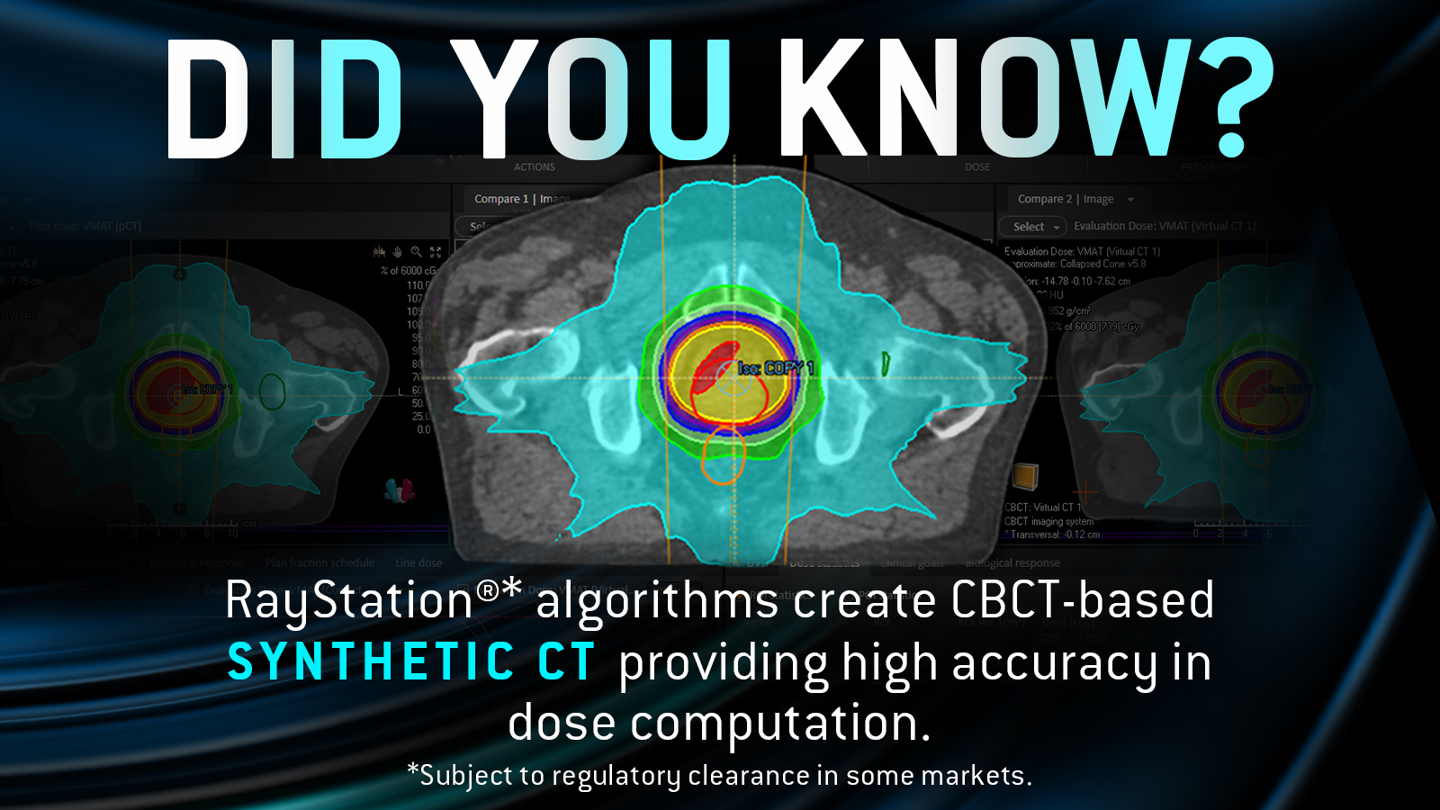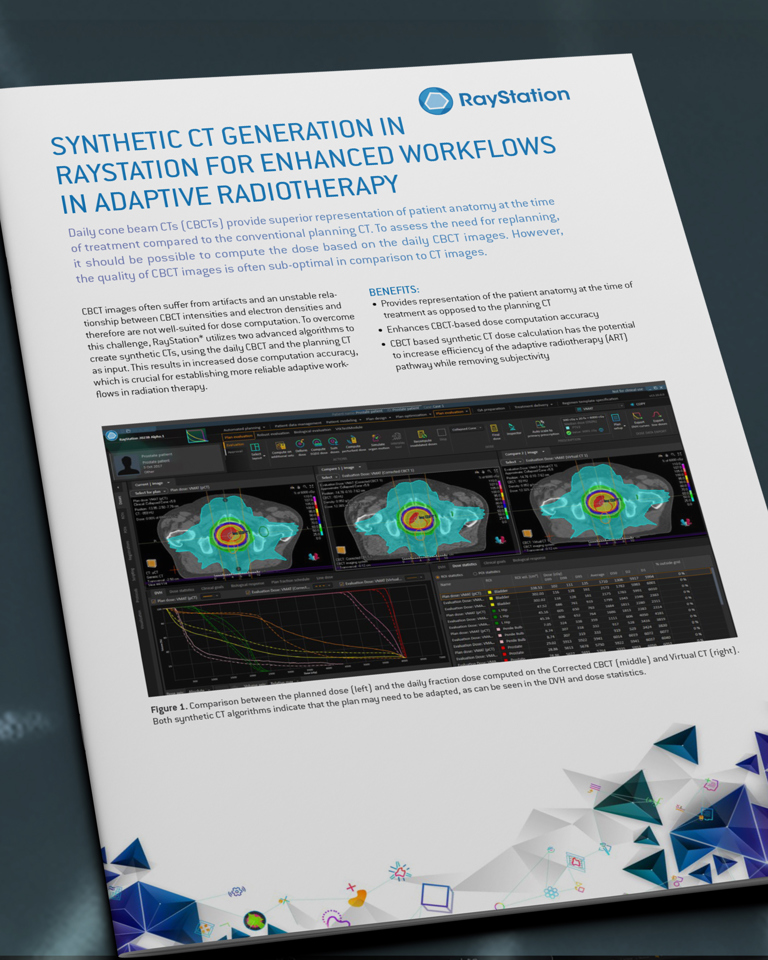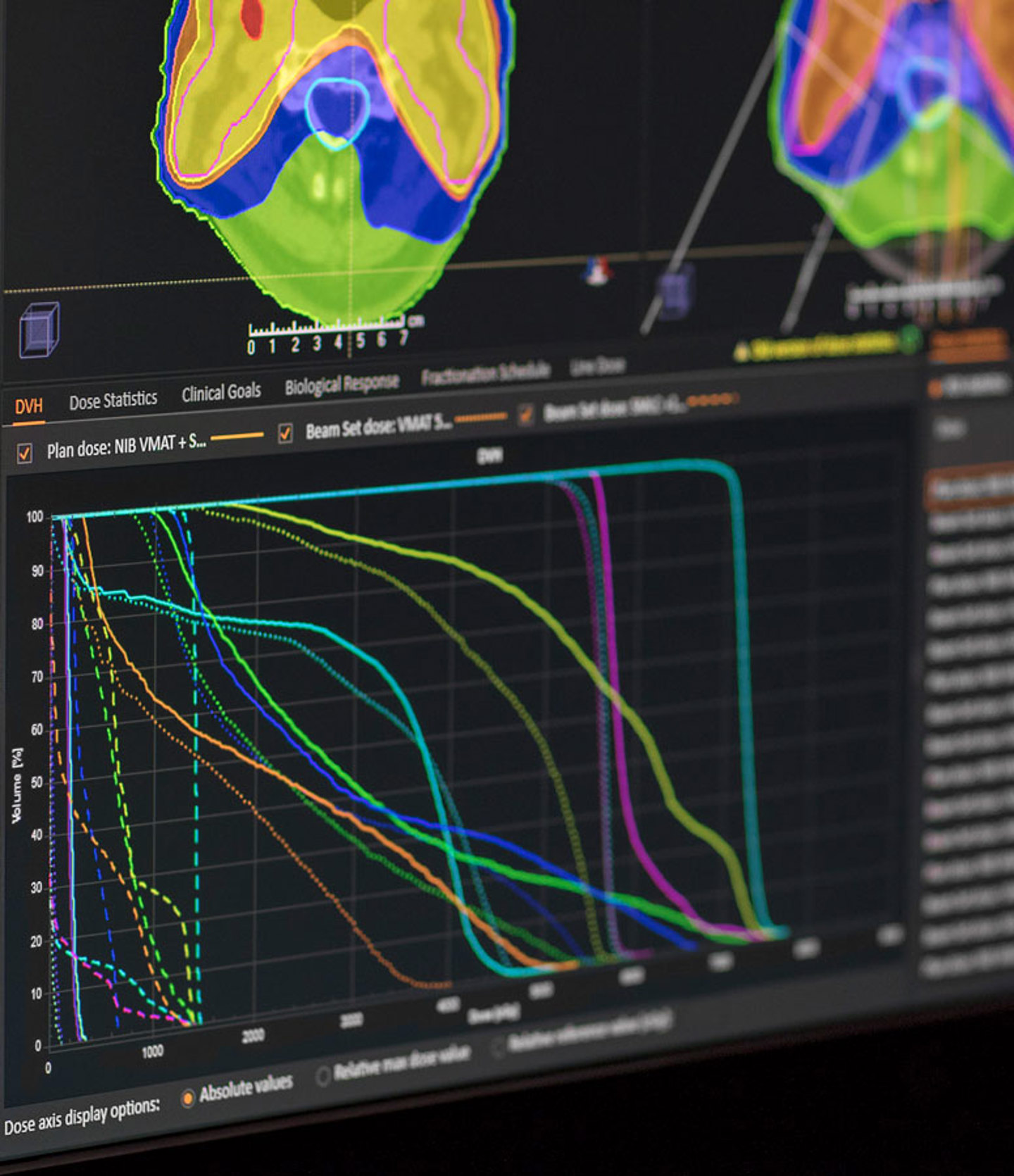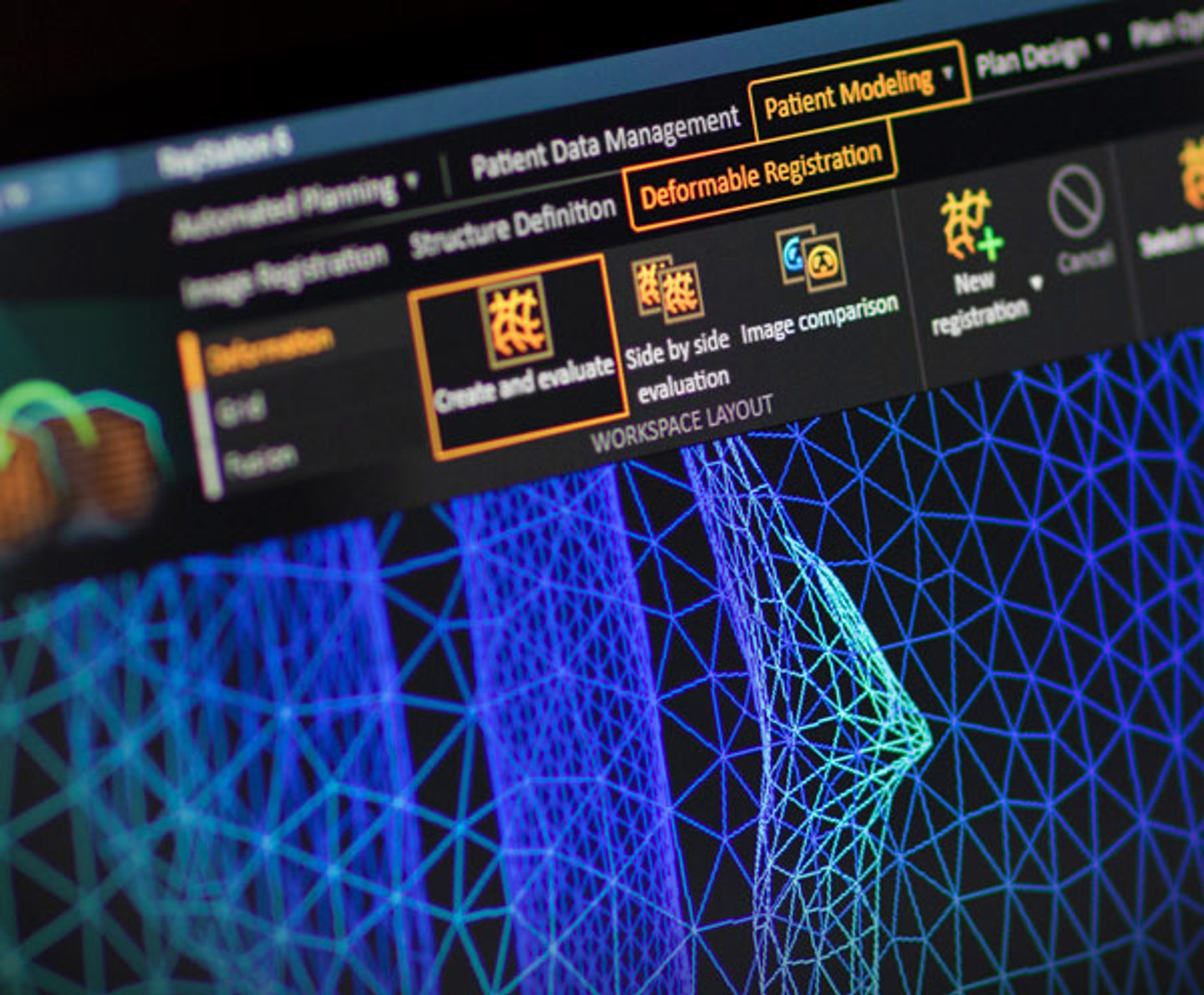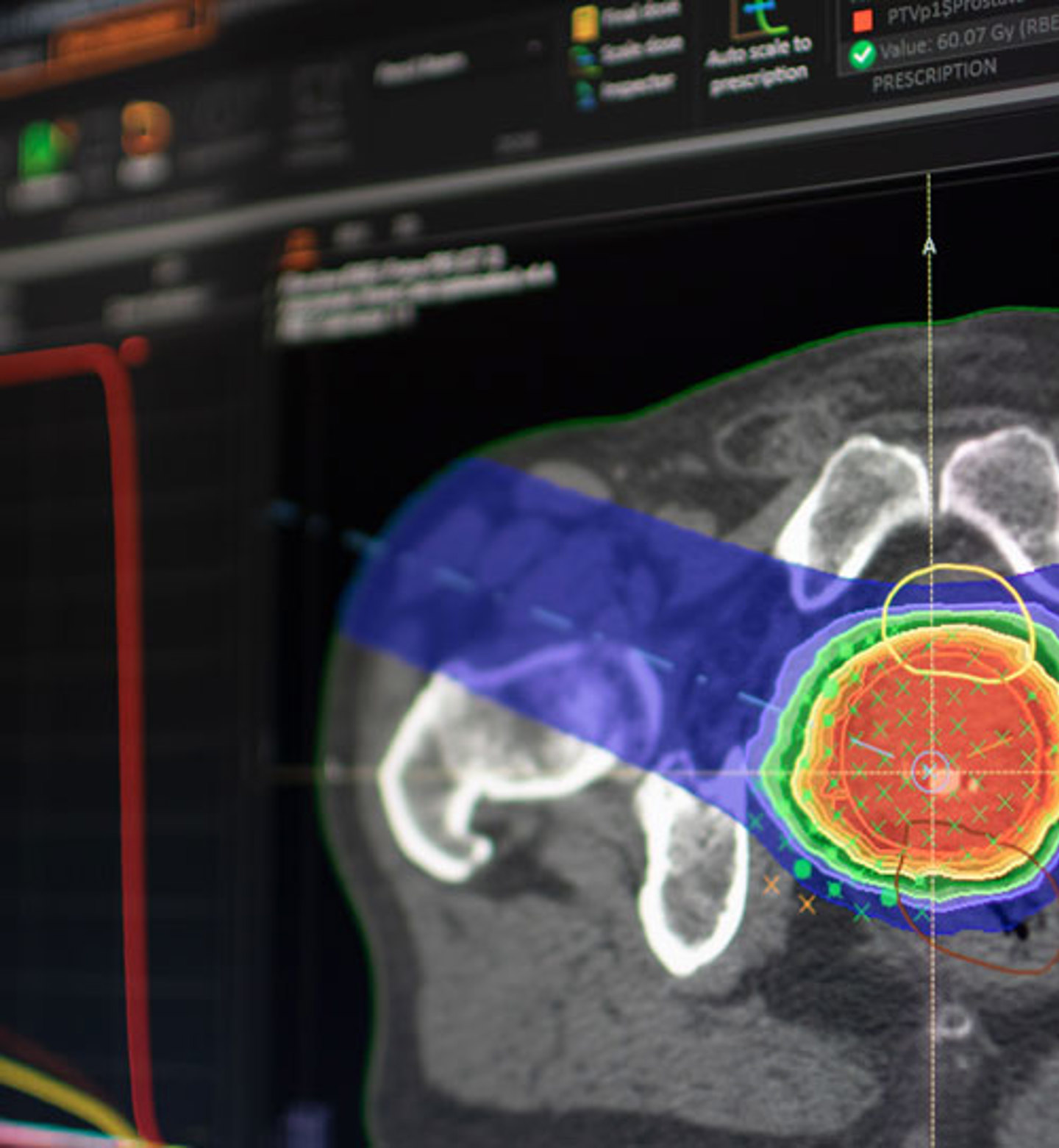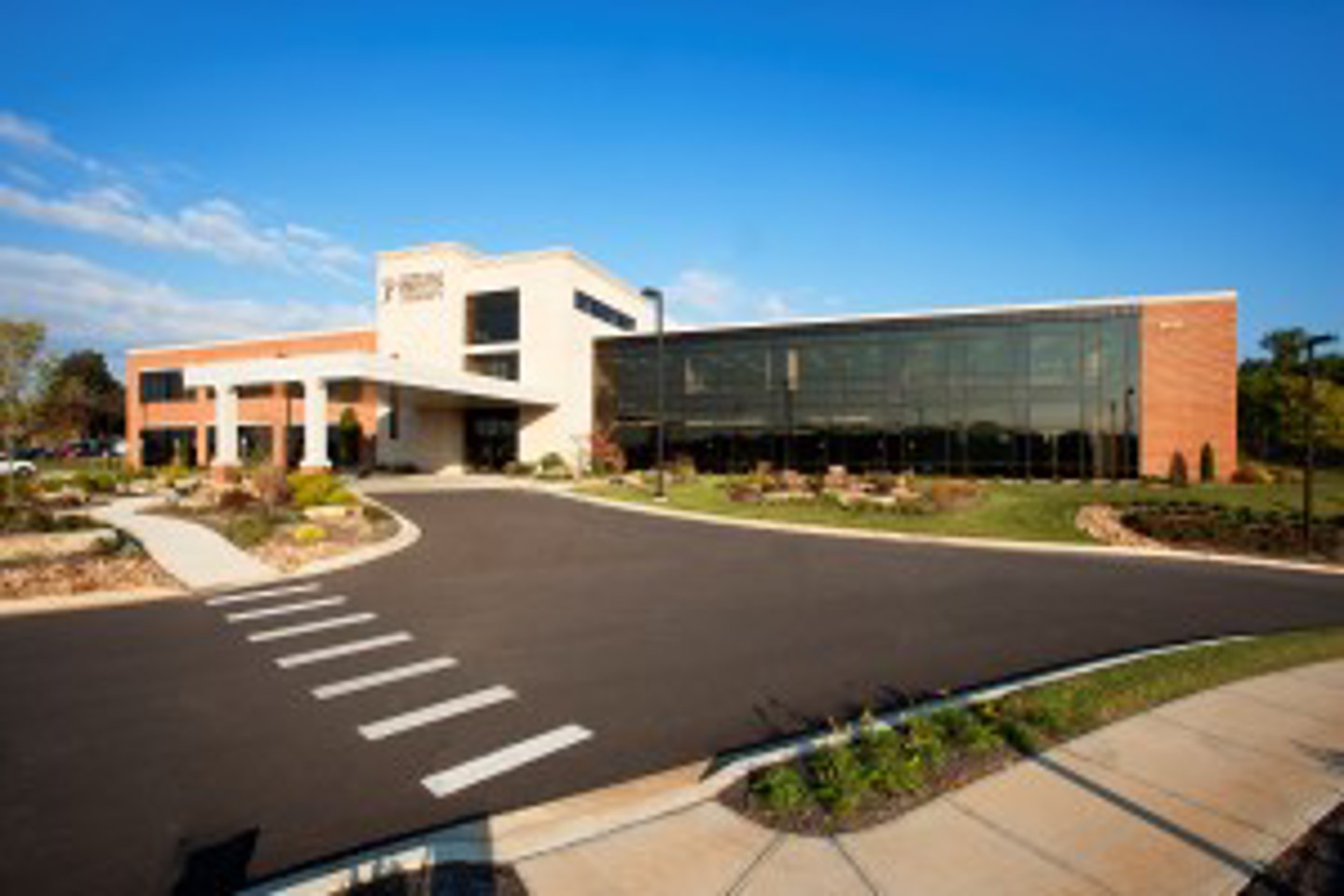Dose tracking
Use the dose tracking module in RayStation to evaluate the actual delivered dose to the patient. The dedicated module and the fast and diverse tools will enable you to evaluate daily changes as well as evaluating trends as the treatment progresses.
During treatment, fraction images are acquired daily or regularly for patient positioning. When treatment time images of the patient, from CT, PET/CT, cone-beam CT or MR, are acquired - it is possible to use these images to evaluate the daily delivered dose.
When treatment time images of the patient from CT, PET/CT, cone-beam CT, MVCT or MR, are acquired, you can compute dose on the daily images to evaluate the actual delivered dose to the patient. Deform and accumulate doses from different fractions in a common geometry to compute the accumulated delivered dose over the course of treatment.
- Dose calculation based on CBCT
- Creation of synthetic CT based on CBCT
- Easy dose accumulation over fractions
- Dedicated workspace for evaluating daily doses and deformable dose accumulation
- Fraction schedule shows delivered fractions, acquired images and available doses
- Synchronized side-by-side views of planned and delivered dose

